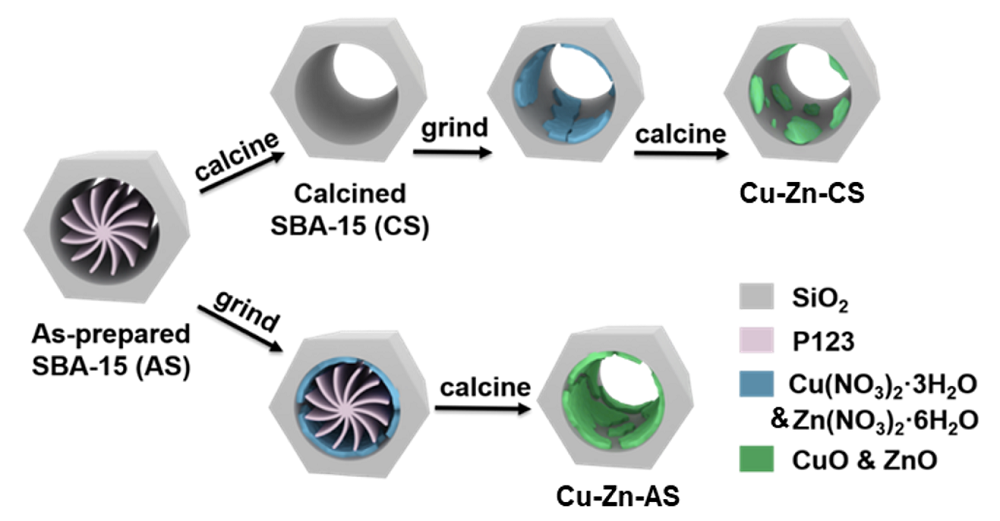Adsorptive separation plays a critical role in the chemical [
1–
5], pharmaceutical [
6–
8], energy [
9–
11] and environmental fields [
12–
16]. Compared to other separation methods, adsorption has unique advantages; for example, it requires little energy and does not involve the introduction of new substances. The key point of adsorptive separation is the development of highly efficient adsorbents [
17–
21]. Since the discovery of mesoporous materials [
22–
24], such materials have been used as ideal carriers of adsorbents due to their unique physicochemical properties [
25–
28]. Wu and Zhao [
29] studied the adsorption capacity of various mesoporous materials. The results showed that mesoporous materials have high potential for applications in adsorption. These materials, such as MCM-41 and SBA-15, have large specific surface areas and high pore volumes [
30–
34], but they have few active centers, so they are often used for physical adsorption. Thus, the modification of mesoporous materials has always been a common research topic.












